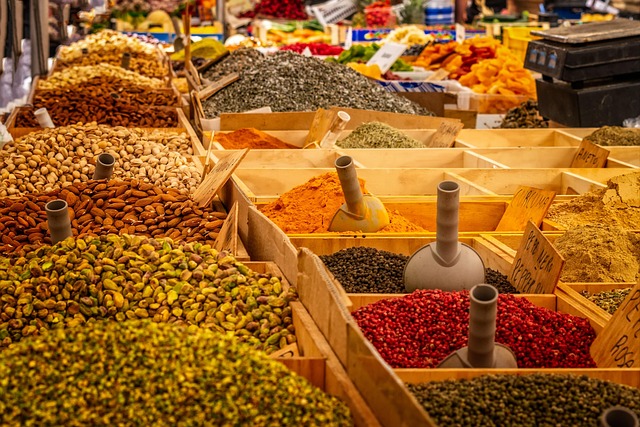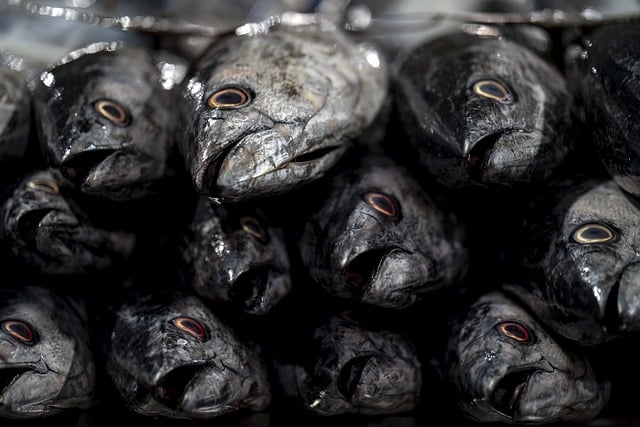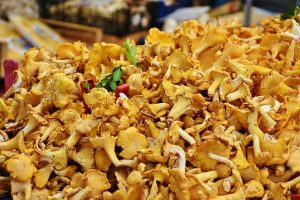Unveiling Perfumery’s Secrets: Market Research & Fragrance Analysis
The global perfume market thrives on cultural diversity and consumer preference, where fragrance ana…….

The global perfume market thrives on cultural diversity and consumer preference, where fragrance analysis acts as a decoder for industry success. By analyzing sales trends, regional variations, and consumer behaviors, experts unlock the stories behind scents that transcend borders. This data-driven approach guides perfumers in crafting innovative compositions tailored to specific tastes, from floral notes to woody accords. Market research, combining demographic and psychographic analysis, ensures products resonate with diverse audiences globally. Advanced fragrance analysis techniques predict emerging trends, allowing brands to stay ahead. Ethical market research practices maintain transparency and consumer trust within this dynamic industry.
Market Research in Perfumery plays a pivotal role in shaping the success of scent-based products. From understanding global trends to predicting the next big aroma, it’s an industry that blends art and science. This article delves into key aspects of market research, including a snapshot of the global perfume market, the power of fragrance analysis for gauging consumer preferences, demographic and psychographic insights for targeted marketing, trend predictions, and ethical considerations ensuring transparency and consumer trust. Discover how these elements drive innovation in the dynamic world of perfumery.
- Understanding the Global Perfume Market: A Snapshot
- The Power of Fragrance Analysis: Unlocking Consumer Preferences
- Targeting the Right Audience: Demographic and Psychographic Insights
- Trend Prediction in Perfumery: What's Hot and What's Not?
- Ethical Considerations in Market Research: Ensuring Transparency and Consumer Trust
Understanding the Global Perfume Market: A Snapshot

The global perfume market is a dynamic and diverse landscape, reflecting cultural influences and consumer preferences from around the world. Understanding this market requires a nuanced approach that goes beyond simple sales figures. Fragrance analysis plays a pivotal role in deciphering trends, identifying emerging scents, and exploring the interplay of ingredients that define the current and future perfume scene. By studying global consumption patterns, regional preferences, and changing consumer behaviors, industry experts can gain valuable insights into what captivates scent enthusiasts across borders.
This snapshot of the perfume market reveals a complex web where traditional aromas coexist with innovative compositions. From classic florals to bold woody notes, each region contributes its unique olfactory signature. Market research in perfumery involves delving into these cultural nuances, understanding consumer motivations, and staying attuned to the latest trends shaping this sensory industry.
The Power of Fragrance Analysis: Unlocking Consumer Preferences

In the competitive perfume market, understanding consumer preferences is akin to unlocking a secret code. Fragrance analysis emerges as a powerful tool in this quest, offering insights into the intricate world of scent perception. By studying how consumers interact with and respond to different fragrances, brands can decipher the nuances that resonate most. This data-driven approach allows for the creation of perfumes tailored to specific tastes, ensuring that each bottle captivates its intended audience.
Through advanced techniques, perfumers can identify key components that evoke particular emotions or memories. The analysis reveals preferences for certain notes—citrusy freshness, floral delicacy, or woody warmth—and helps predict trends. Armed with this knowledge, brands can innovate, blending ingredients to craft scents that not only appeal to the senses but also tell a story, fostering a deeper connection with consumers in the perfume market.
Targeting the Right Audience: Demographic and Psychographic Insights

In the competitive perfume market, understanding your target audience is paramount. Market research plays a pivotal role in identifying and reaching the right consumers for any fragrance launch. Demographic data provides essential insights into age, gender, income, and geographic distribution, allowing perfumers to tailor their products accordingly. However, psychographic analysis delves deeper, uncovering lifestyle choices, values, attitudes, and emotional connections that drive consumer behavior. By combining these approaches, brands can create fragrances that resonate with specific customer profiles, ensuring higher market acceptance and success in the perfume industry.
Psychographic factors such as personality traits, interests, and social influences are key elements in fragrance analysis. For instance, a study might reveal that young adults who appreciate nature-inspired scents tend to have an eco-conscious mindset. This knowledge enables perfumers to develop organic, sustainable fragrances tailored to this demographic. Similarly, identifying cultural preferences can help create perfumes that appeal to diverse global markets. Thus, through comprehensive market research, perfumers can craft scents that not only cater to specific demographics but also tap into the emotional and psychological aspects of fragrance selection.
Trend Prediction in Perfumery: What's Hot and What's Not?

In the dynamic world of perfumery, trend prediction is a powerful tool for brands aiming to stay ahead in the competitive perfume market. By leveraging advanced fragrance analysis techniques and extensive consumer insights, industry experts can identify emerging scents and popular fragrances that are poised to capture the public’s imagination. This involves studying global consumer behavior, cultural influences, and seasonal trends to anticipate what will be “hot” and what will fade into the background.
Market researchers employ sophisticated data analytics and social media monitoring to track conversations around fragrances, uncover hidden preferences, and identify key influencers. They analyze sales patterns, demographics, and geographic shifts to predict which notes, accords, and compositions will resonate with consumers in the coming seasons. This forward-thinking approach enables perfumers to create innovative scents that not only meet current demands but also shape future trends in the perfume market.
Ethical Considerations in Market Research: Ensuring Transparency and Consumer Trust

In the dynamic realm of perfumery, market research plays a pivotal role in understanding consumer preferences and shaping successful product launches. However, as researchers delve into fragrance analysis, ethical considerations become paramount to maintain transparency and foster consumer trust. The perfume market, known for its sensory allure, must navigate intricate ethical landscapes to ensure data collection and usage align with ethical standards.
Transparency is key; consumers should be informed about the research process, data gathering methods, and how their insights contribute to product development. This includes being transparent about any incentives offered during surveys or focus groups related to fragrance analysis. Building trust requires ensuring consumer privacy and confidentiality, especially when dealing with sensitive scent preferences and personal tastes. Ethical practices in market research for perfumes involve obtaining informed consent, anonymizing data, and adhering to strict guidelines to safeguard consumers’ rights and perceptions of fairness.
Market research in perfumery is a multifaceted discipline that combines understanding global trends with deep consumer insights. By leveraging fragrance analysis, industry professionals can unlock preferences and tailor offerings to specific demographics and psychographics. As the perfume market continues to evolve, trend prediction becomes vital for staying ahead. Ethical considerations ensure transparency and consumer trust, fostering a sustainable and responsible industry. Through these integrated approaches, the perfumery sector can offer unique, appealing, and ethically sourced fragrances that resonate with diverse audiences worldwide.







